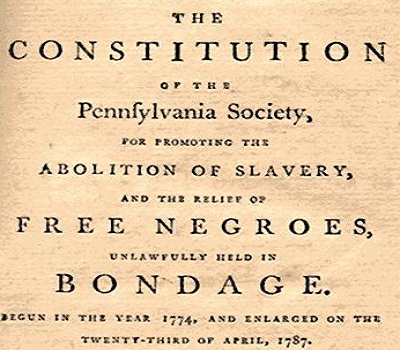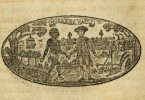
Also referred as the Abolition Society. It was the first of its kind in the colonies and served as inspiration for other societies.
Early view on slavery
Like most citizens of his time Benjamin Franklin owned slaves and viewed them as inferior to white Europeans, as it was believed they could not be educated. His newspaper the Pennsylvania Gazette advertised the sale of slaves and frequently published notices of runaways. However, he also published antislavery ads from Quakers.
Franklin owned slaves from as early as 1735 until 1781. The Franklin household had six slaves; Peter, his wife Jemima and their son Othello, George, John and King.
After 1758 Franklin gradually changed his mind when his friend Samuel Johnson brought him to one of Dr. Bray’s schools for black children. Dr. Bray Associates was a philanthropic association affiliated to the Church of England. In 1759 he joined the association by donating money.
Abolition Society
In 1759 he met Anthony Benezet who started a school in Philadelphia and who later co-founded the Abolition Society. In 1763 Franklin wrote that African shortcomings and ignorance were not inherently natural but come from lack of education, slavery and negative environments. He also wrote that he saw no difference in learning between African and white children.
In 1787 Franklin became the President of the Philadelphia Society for the Relief of Free Negroes Unlawfully Held in Bondage, often referred as the Abolition Society. The Society was formed by a group of abolitionist Quakers and Anthony Benezet in 1774. The Abolition Society was the first in America and served as inspiration for the formation of abolitionist societies in other colonies. The group focused not only in abolishing slavery but also in education, moral instruction and employment.
In Address to the Public, a letter dated November 9th, 1789, Franklin wrote wholeheartedly against the institution of slavery. He argued that slaves have long been treated as brute animals beneath the standard of human species. Franklin asked for resources and donations to help freed slaves adjust to society by giving them education, moral instruction and suitable employment.
On February 3rd, 1790, less than three months before his death, Franklin petitioned Congress to provide the means to bring slavery to an end. When the petition was introduced to the House and the Senate it was immediately rejected by pro-slavery congressmen mostly from the southern states. A committee was selected to study the petition further and on March 5, 1790 it claimed that the Constitution restrained Congress from prohibiting the emancipation and trade of slaves. Slaves and slavery were indirectly mentioned in the 1787 Constitution. By this time Franklin’s health was fragile and on April 17 he passed away at age 84. It was on January 1st, 1863, during the President Abraham Lincoln’s administration, that the Emancipation Proclamation was signed giving freedom to about 3 million slaves.
=> Read about Crispus Attucks, the first American hero of the American Revolution

